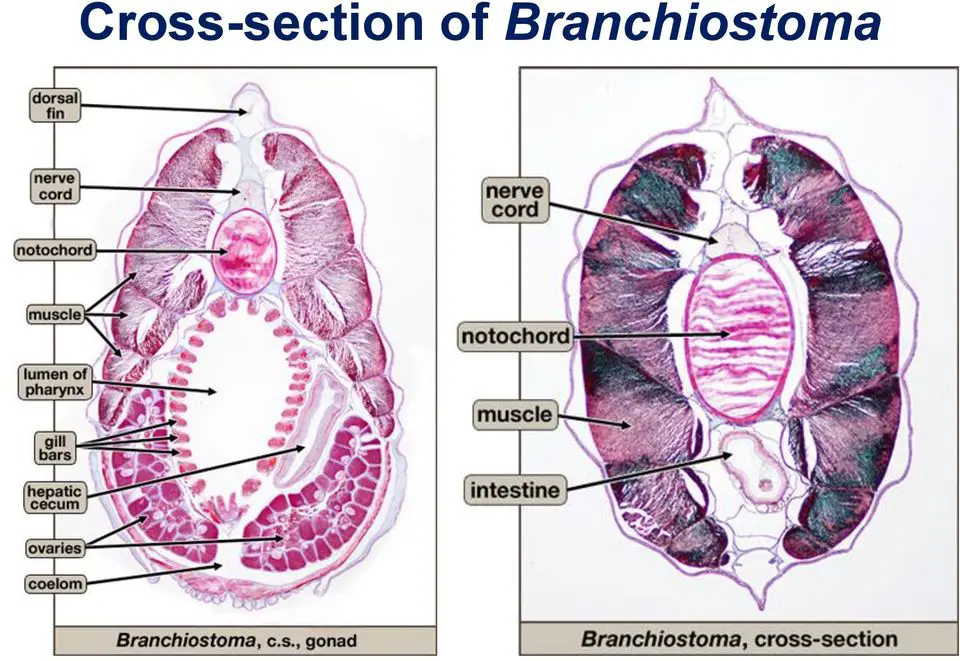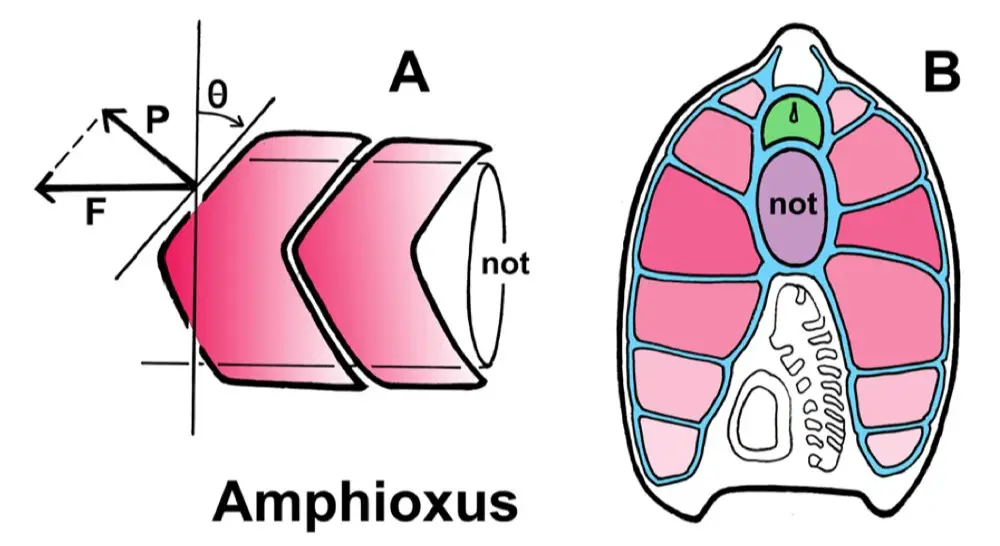Coelom in Branchiostoma:
- In Branchiostoma the body cavity is true coelom and the coelom is lined by mesodermal tissue.
- In Branchiostoma the coelom originate during embryonic development from the archenteron, so in Branchiostoma coelom is enterocoelous type.
- The body cavity or the cavity inside the coelom is filled with lymph like fluid.
- The coelom surround the gut and suspended by the dorsal mesentery.
- The coelom is reduced in right side of the hindgut but in Branchiostoma the coelom present in pharynx region also. In general in higher Chordate the coelom remain absent in pharynx region but in Branchiostoma it presents in reduced state.
- In pharynx region, two dorsal longitudinal pharyngeal canal present on either side of the pharynx which on posterior region join to the rest part of the coelom.
- On ventral side to the endostyle a longitudinal canal run along the mid-ventral line is known subendostylar coelomic canal.
- The mid-ventral longitudinal subendostylar coelomic canal join to the two dorso-lateral longitudinal pharyngeal canal through vertical coelomic canal on either side.
- The lateral vertical pharyngeal canals pass through the primary gill bars present on either side of pharynx.
- Coelomic Cavity or spaces present in gonads are known as gonocoel.

Atrial Cavity or Atrium in Branchiostoma:
- Atrium or atrial cavity is the space or cavity present in the body of Branchiostoma which are not considered under coelom.
- It is a large cavity inside the body of Branchiostoma which is lined by ectodermal origin atrial epithelium, but in case of coelom it is lined by mesodermal tissue.
- During embryonic development the metapleural folds present on their lateral side. The metapleural folds present on the above of gill slits in embryonic stage but when it grow and join ventrally through a fold form atrial cavity.
- In adult Branchiostoma the transverse fold of the two metapleural folds grow and encloses the lateral and ventral side of pharynx and form atrial cavity.
- The gill slits present on pharyngeal wall and the pharyngeal wall in covered by the wall of atrial cavity from outside. So the gill slits in Branchiostoma do not open outside through the pharyngeal wall, the gill slits open into the atrial cavity.

- The atrial cavity open outside through a rounded pore known as atriopore which present mid-ventrally at the base of ventral fin.
- On anterior side the atrial cavity join to the two dorso-lateral longitudinal coelomic canal to form brown funnel or atriocoelomic canal.
- On posterior region the atrial cavity extend beyond the atriopore upto the anus and remain closed at that end.
- The atrial cavity give some extra protection to the pharynx and absorb the mechanism shock.
Movement and Locomotion in Branchiostoma:
- Branchiostoma generally do not swim but when they disturbed the start to swim actively.
- The V shaped muscle fibres present in the myotomes are responsible for swimming. The contraction of muscle fibres in myotomes create a undulation movement on the lateral side which gives them a propulsive force for swimming.
- The myotomes show alternate arrangements of myotomes on two lateral side and the muscle fibres contract rhythmically.
- All the myotomes contract rhythmically from anterior end to posterior end and this flow of contract create the propulsion force.
- The elasticity of the notochord prevent shortening of the body length during the contraction of myotomes.
- The elastic notochord make the body bend sidewise.
- The notochord do not provide anchorage to the myotomes muscle fibres but the connective tissue seathe present on the notochord provide the anchorage for the myotomes muscle fibres.
- The fins are not well developed in Branchiostoma so the fin are not very useful for proper navigation. The caudal fin provide balance in water and present rotation in water and sometimes give some extra propulsive force.

Reference
Detailed Information on
Characteristics Features of Subphylum Urochordata
Classification of Subphylum Urochordata
Examples of Subphylum Urochordata: Clavellina, Salpa, and Doliolum
Examples of Subphylum Urochordata
Branchiostoma Habitat and Geographical Distribution
Hi Everyone!!! Welcome to Imaluop. Imaluop always try to learn some new and he want to share to other people. Here we will try to learn various topics on Science, specially on Biological Sciences.